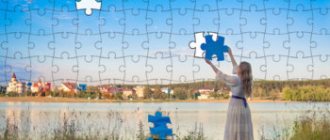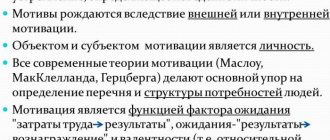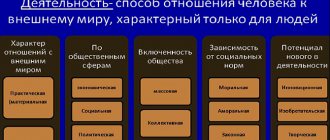After the lateral break was made, we had many mostly illogical (lateral) judgments. Now we have to take a step aimed at eliminating the resulting pattern gap. The upcoming stage is associated with work on the development of creative imagination to search and create full-fledged creative ideas from the metamorphoses obtained in the previous stages. In other words, in this class you will learn how to learn how to most effectively repair a lateral tear. This lesson describes the methods, principles and features of developing creative imagination, and also contains useful techniques, exercises and games.
History of discovery and study
In Russian psychology, interest in the phenomenon arose along with the study of other functions of the psyche. The main contribution to the study process was made by L. Vygotsky. He dedicated a book and dozens of articles to the imagination - a fundamental presentation of findings and theories regarding the development of the ability to imagine in ontogenesis.
Vygotsky paid great attention to the development of cognitive processes in preschool age. The scientist believed that this period was critical
He considered the ability to imagine in preschool age as the ability to create a whole from elements.
Vygotsky noted the complexity of mental activity and gradual development. According to his theory, creative activity depends on acquired experience. The child expresses accumulated knowledge through creativity. The accumulation process is influenced by various factors: interests, needs, desires. The ability to express oneself in childhood and adulthood depends on the speed of their satisfaction. Negative experiences acquired in childhood affect the adult individual.
Functions
- Prompting activity with the help of a bright, attractive image of its result, means and methods of implementation, generalized ideas and specific plans.
- Regulation of behavior in an uncertain, problematic situation with the help of images of alternative actions and their consequences.
- Emotional self-regulation, autopsychotherapy, illusory satisfaction of needs. This function comes with the risk of escaping reality. Replacing reality with gaming images is one of the consequences of gambling addiction.
- Organization of cognition - reconstruction of an object according to description, completion of missing elements, modeling.
How images arise
There are various ways to create them.
Emphasis is the highlighting of any parts, features or properties. The following techniques are used here:
Typification is a generalization of an image and its emotional saturation. Many literary heroes are shining examples of typification. For example, Gogol’s landowners from “Dead Souls”: Manilov is a barren dreamer, Korobochka is a greedy hoarder, Nozdryov is a dashing reveler.
Combination is the creation of a new one by combining parts of an existing one.
Exaggeration is the deliberate strengthening of any characteristic feature or phenomenon. For example, the expression: “This morning I drank ten liters of coffee” would be an exaggeration.
Exaggeration and understatement. Gulliver can be considered a striking example of both.
Combination is a combination of elements that already exist in new combinations.
Types of imagination
Active imagination is the process of solving a problem (creative or personal). A person operates with specific information, creating new connections between images.
Passive – meets internal needs. Images help to displace negative emotions or reduce their intensity, while positive ones, on the contrary, strengthen them.
Involuntary (unintentional) – causes the appearance of images in a state of reduced control by consciousness. These can be dreams, a state of drowsiness, half-asleep-half-awake, hallucinations and daydreams (creating an ideal world where a person is comfortable).
The power of involuntary imagination is proven by a world-famous example when D.I. Mendeleev dreamed of his periodic system of chemical elements, which he worked hard on, but could not complete.
Anticipatory imagination is the ability of people to foresee the results of the activities they perform.
Recreating – creating images based on description. It helps when reading books, it is useful wherever it is necessary to create reality using diagrams and drawings (architects, engineers, designers, etc.).
Creative imagination is the creation of new ideas and images that are valuable to others. They are built by analyzing and synthesizing existing ones, or creating ideal, previously non-existent figures.
A dream is the process of creating images of the future. May be sterile and effective
Efficiency is an important quality for realizing creative ideas
Imagination in psychology
Imagination uses the memory of a person who has certain experiences, knowledge and memories. Creative thinking is also used, which may involve a person's ability to think of something they have never seen or heard. In psychology, the following functions of imagination are distinguished:
- Cognitive – imagination helps to systematize information, understand it better and highlight something new for yourself.
- Forecasting - a person is able to imagine in his head how events will unfold, what the final result will be.
- Understandings - by imagining, a person can guess what another individual is thinking and feeling.
- Self-development – a person fantasizes and makes predictions, which makes him stronger and more self-confident.
- Protection - if a person can predict events, then he can prepare for them.
- Memories are the ability to reproduce what a person has already experienced.
Imagination comes in various forms. The most famous are:
- Agglutination is the creation of new forms, objects, phenomena based on really existing ones, which a person transforms in his consciousness.
- Emphasis – fixation of attention on a separate characteristic of an object.
- Typification is the identification of certain features in several objects.
Cognitive sphere
Creative thinking is closely related to all human cognitive abilities.
Memory
People capable of creativity have specific types of memory. Musicians - auditory, artists - visual, choreographers - motor, tasters - gustatory, sculptors - tactile, etc. And absolutely all of them have figurative and associative memory. Ordinary people, when solving a problem, use only the original material. Creative people draw on all their past experience for this, which, it would seem, is completely unrelated to the problem. Psychologists call this “high memory availability.”
Attention and concentration
Creative people are often considered distracted and unfocused. In most cases this is true. They are simply too busy with their personal perception of the environment and are not motivated to simultaneously be interested in something else. For example, at a meeting they may not listen at all to the boss’s report on summing up the results for the past quarter. At this moment, they imagine a wise eagle owl in his place (associations are triggered) or they transfer him to the shore of the azure sea and make him an animator (desired instead of actual). But when they are passionate about the creative process, they can work for hours without being distracted by anything. Neither extraneous sounds nor hunger can disturb them. Psychologists call this complete immersion and involvement.
Perception
Creative people perceive the world differently than everyone else. They are able to see in everyday things and phenomena something that pushes the boundaries of what is familiar and permissible. Only for them, Malevich’s “Black Square” is pure art in all its beauty. They are the ones who come up with household life hacks: cleaning the soles of shoes with a toothbrush, collecting mercury from the floor with tape and growing seedlings in eggshells.
Imagination
Creative thinking is impossible without imagination. Of all the cognitive abilities, they have the most visible connection. Only through the reproduction of images and associations in the mind is a person able to create something new, creative, unusual, unlike anything else.
Intelligence
There is no single answer yet as to how intelligence and creative thinking are interconnected. Many talented people who created priceless masterpieces of art had an IQ below average. But there are also those for whom it has gone off scale. The situation is exactly the same on the other side: people with high intelligence do not always have creative potential. This is especially noticeable at school. Excellent students, as a rule, are not good at music, drawing, and applied activities. But there are exceptions when a child is talented in literally everything, demonstrating high performance in both criteria.
Many tend to explain this by the convergence and divergence of thought processes. The table will clearly demonstrate what it is.
It turns out that creative thinking is the basis of the thinking of the divergent, and not the convergent.
Development of imagination
Imagination, as a process that helps to understand the world around us, can and should be improved. To solve this problem, special exercises and activities aimed at its development are best suited. It must be said that imagination cannot be developed separately from attention, memory and thinking. That is why the tasks presented below contribute to noticeable progress in all cognitive processes, the leading of which is imagination.
Forecasting the future situation. The development of imagination begins with the formation of the skill to clearly imagine an object or phenomenon. Before you start any business, try to think in advance what will come of it. Answer yourself the question of what you want to get as a result, what you see as the final goal. It has been proven that the ability to imagine and think constructively in the direction of a given goal builds self-confidence, gives additional strength, adds determination, and reduces doubts.
Creating an artistic image. Suitable for writing a fairy tale, story, creating a portrait or landscape. You can also include embroidery here, the main thing is that you like the process itself. First, build in your head the image you want to portray.
Try to make it bright, eye-catching, helping to reveal your aspirations and talents. It is not necessary to create “War and Peace”, you can limit yourself to a small poem or sketch, the main condition is that creativity should inspire new ideas
It’s good if, in the process of imagination, fresh images and ideas begin to arise. The exercise is aimed at developing the ability to develop an image, allowing it to reveal itself in all its fullness and diversity.
Finishing the figure. The exercise is about developing the skill of creating a picture in your imagination out of nothing, it perfectly trains attention to detail, and teaches you to understand that a new image can be modeled from the most insignificant details. In the center of the sheet of paper, as a rule, there is a fragment of the figure that needs to be completed. If you distribute such sheets to participants in a small group and ask them to complete the task, each person will end up with their own unique drawing. The process of imagination for each person works purely individually.
"I am a successful person." If you have long dreamed of self-realization, then performing this exercise will bring you great joy and a colossal increase in energy. Imagine what you need in order to consider yourself an accomplished person. The main task is to realize as specifically as possible and keep in mind the activity that brings maximum satisfaction and helps to develop your personality. When this image is found, continue to draw a picture of ideal success in your imagination, noting what events should happen in the future. The exercise is unique in that it allows not only to train the imagination, but also aims a person at a positive result, helps to develop faith in one’s own strengths and capabilities.
These imagination exercises contribute to the formation of an individual vision of life, building prospects for personal and professional advancement. The tasks can be completed every day; they are suitable for representatives of any profession and title. Of course, it will be much easier to complete them for creative people related to painting, literature, music, design, etc.
Thus, the role of imagination in human life is extremely significant and deep. After all, each of us in any activity requires mastery of abstract thinking, the ability to imagine the desired effect. Try to read more books, participate in the cultural and social life of the city, and constantly improve your potential. A developed imagination is an integral part of a successful personality.
A scandal in a noble family, or Is creativity possible without imagination?
So, the scientist and inventor need imagination. Does an artist need it? At first glance, the answer is obvious. But, apparently, not everyone. At least in art schools they work on technique, and not on developing the imagination of students. What is the result?
In the early 2000s, a wave of fakes swept the art market. Counterfeits even end up at auctions at Christie's and Sotheby's, since their quality is so high that even experts find it difficult to clearly judge the authorship of the works presented to them. A huge scandal erupted in May 2000, when the auction houses Sotheby's and Christie's published their catalogs. Both houses offered buyers the same painting - “Vase of Flowers” by Paul Gauguin. Each house was confident that it was displaying an original.
Of course, copy artists make money this way. But a legitimate question arises: why don’t the owners of such magnificent equipment create their own paintings, because no money can replace implementation. The answer is simple: they lack imagination for their own creativity. Compare their fate with the fate of, for example, Salvador Dali, who spoke in his characteristic shocking manner about imagination like this: “If a person cannot imagine a galloping horse on a tomato, he is an idiot!”
Without imagination there can be no creativity, and therefore no culture, because the main instrument of culture - art - is impossible without creative imagination. Freud defined culture as “a mode of existence which humanity has chosen for the purpose of its own preservation.” Culture consolidates society and limits our ever-increasing hostility. Without culture, society is not viable.
In the past, imaginative people promoted science and culture. What has changed in our technological age?
Imagination and creativity
Creativity is the process of creating fundamentally new or improved methods for solving tasks and problems. It becomes obvious that imagination and the creative process are very interconnected.
Imagination here is defined as the transformation of ideas about reality and the creation of new images on this basis. It works every time a person thinks about some object or phenomenon, without even coming into direct contact with it. Thanks to creative imagination, the transformation of this idea is carried out.
Creative thinking and imagination have their own specific characteristics. Through this process, it is possible to create completely new, unique representations based on the subject's own ideas and thoughts, which express the personality of the creator. It can be voluntary or involuntary. To a large extent, creative imagination or inclination towards it is determined from birth, but it can also be developed.
The development of creative imagination occurs in three stages. At first, a creative idea arises. In the mind of the creator, a fuzzy image first appears, an initial idea that can be created arbitrarily, without purposeful comprehension of the idea. The second stage involves hatching a plan. A person thinks about strategies for translating an idea into reality and mentally improves it. The third stage completes the incubation of the idea and brings it to life.
The development of creative imagination is carried out in the process of transition from involuntary to voluntary, from recreating to creative. During childhood and adolescence, creative imagination has characteristic features; it is special for its magic, fantastic judgments about the world and the absence of a critical component of thinking and rationality. During adolescence, complex changes occur in the body, and therefore in consciousness as well. Objectivity is developed, perception becomes more critical. Rationality of perception appears a little later, when a person becomes an adult. The adult mind begins to control the imagination, often too much criticality and practicality weakens the processes of fantasy, overfilling them with meaning, loading them with some kind of information that is actually unnecessary.
There are certain methods for developing creative thinking. The most practical method is to read literature and watch scientific films, expand the range of your knowledge, draw knowledge from different areas of life, memorize and analyze information. In this case, a large amount of materials for creative processes appears.
Imagine imaginary objects, try to carry out various manipulations with them. For example, imagine the sea, hear the sound of breaking waves, feel the breath of sea freshness, imagine entering the water, feel its temperature, and so on. Or another example, imagine a pear. Imagine its shape, size, color. Use tactile perception, imagine it when it is in your hand, feel its surface, aroma. You can mentally take a bite of it and imagine the taste.
In order for the imagination to be voluntary, it is necessary to work on it through regular training. To make the effect even greater, you need to look for sources of inspiration, ask friends for help, and ask about their ideas. Try group work to create ideas, sometimes the results are very unique, and a person becomes more active if the process of imagination occurs in a circle of other creative individuals.
Signs
Psychologists identify the following signs of creative thinking:
- speed of generating ideas;
- flexibility - generating an endless stream of ideas;
- originality - the uniqueness of ideas, their dissimilarity from others;
- detailing - important small details are added during the work process;
- emotional involvement in the problem being solved (as practice shows, an unmotivated person capable of creativity will not even begin to consider it);
- multifunctionality - the ability to do several things at once without compromising their quality;
- completeness - every idea and image acquires logical completeness.
Consequences of creative thinking and activity
Representatives of Gestalt psychology painted the following portrait of a person who is distinguished by a creative way of thinking (they call him a “creator”):
- is not limited by anything either in thoughts or in action;
- not blinded by habits;
- never repeats anything, especially after someone;
- does not act mechanically;
- does not take a one-sided, partial position;
- is unable to concentrate on what is not interesting to him;
- does not perceive the world and other people by their external standards and parameters, but always tries to look inside;
- not rational, not calculating, not indifferent and not indifferent.
Psychologists have even determined how the character traits of people with a creative mind manifest themselves:
- go against the standards of society;
- have a strong personality;
- very sensitive and vulnerable;
- underestimate their abilities too much;
- Even in adulthood, they remain children at heart.
So people who are inclined to creativity can most often be noticed without even conducting any additional research - their character will reveal them in any society.
Main types
There are many examples in history when fantasies were later reflected in reality. Science fiction writers and inventors actively studied the world around us and were able to predict the development of humanity.
For example, computers, video calls, and space flights are found in the works of writers of the 20th century. In the 21st century, all this has become everyday things.
Children's imagination manifests itself most clearly during games.
Therefore, fantasy has its own functions; it cannot be considered a useless process. Psychologists don't know exactly why some people exhibit this ability more than others. There are several types of imagination.
Active
It was with his help that the entire culture was created. Active fantasy serves as motivation for a person, since he clearly imagines the result of his productive activity. With the help of certain actions, the image of the future is brought closer.
For example, a sculpture conceived a statue. He takes an ordinary piece of stone and begins to chip away at it little by little. The result is a specific figure.
In this type of imagination, a person is guided by his idea of an object that does not exist in nature. Therefore, such fantasies made it possible to create all objects of art.
Passive
This species is characterized by dreams and fantasies. A person only invents different images, but is in no hurry to translate them into reality. This process is not dangerous, but some people devote all their time to it and give up on real work.
Dreams themselves help to distract from problems
A person himself evokes images, indulges in daydreams and imagines what and how he will change. A simple example of passive imagination is Oblomov from Goncharov’s novel. He lay on the sofa, dreaming about how he would get married and improve the estate. But even for the sake of the woman he loved, he did not dare to change anything, and remained with his dreams.
Alternative
There is another classification of fantasies. She distinguishes between voluntary and involuntary imagination. What characterizes voluntary imagination is its appearance when solving specific problems. For example, when doing math tasks, you need to visualize the solution
This is especially important for doing geometry exercises.
In dreams and random visions, this is where voluntary imagination is usually found. This happens especially often during meditation or other trance practices.
There is another classification that distinguishes reproductive and productive imagination. The first is characterized by the creation of images that are as close as possible to real objects. For the second, the material is processed as much as possible in the author’s thoughts, and then implemented in life. Different classifications allow you to look at the same term differently.
/ Home / Textbooks / General psychology / Imagination
General characteristics of imagination and its functions Human consciousness is capable of not only storing information about objects, but also performing various operations with it. Man emerged from the animal kingdom because he learned to create complex tools. But in order to create a stone axe, you first had to create it in your imagination. Man differs from animals in that he is able to create in his mind an image of an object or phenomenon that does not yet exist, and then brings it to life. After all, in order to transform the world in practice, you first need to be able to transform it mentally. This ability to construct new images in one’s thoughts is called imagination. The process of imagination is manifested in a person’s creation of something new - new images and thoughts, on the basis of which new actions and objects arise. Imagination is part of the individual’s consciousness, one of the cognitive processes. It reflects the outside world in a unique and unique way; it allows you to program not only future behavior, but also work with images of the past. Imagination is a process of creative transformation of ideas that reflect reality, and the creation on this basis of new ideas that were not previously available. In addition to this, there are other definitions of imagination. For example, it can be defined as the ability to imagine an absent (at the moment or generally in reality) object, hold it in consciousness and mentally manipulate it. Sometimes the term “fantasy” is used as a synonym, which denotes both the process of creating something new and the final product of this process. Therefore, in psychology the term “imagination” has been adopted, denoting only the procedural side of this phenomenon. Imagination differs from perception in two ways: - the source of emerging images is not the external world, but memory; - it corresponds less to reality, since it always contains an element of fantasy. Functions of imagination: 1 Representation of reality in images, which makes it possible to use them when performing operations with imaginary objects. 2 Formation of an internal action plan (creating an image of a goal and finding ways to achieve it) in conditions of uncertainty. 3 Participation in the voluntary regulation of cognitive processes (memory management). 4 Regulation of emotional states (in auto-training, visualization, neuro-linguistic programming, etc.). 5 The basis for creativity - both artistic (literature, painting, sculpture) and technical (invention) 6 Creation of images that correspond to the description of an object (when a person tries to imagine something he has heard or read about). 7 Producing images that do not program, but replace activity (pleasant dreams replacing boring reality). Types of imagination: Depending on the principle underlying the classification, different types of imagination can be distinguished (Fig. 10.1):
Classification of imagination Characteristics of individual types of imagination Active imagination (intentional) - the creation by a person of his own free will of new images or ideas, accompanied by certain efforts (a poet is looking for a new artistic image to describe nature, an inventor sets a goal to create a new technical device, etc.). Passive imagination (unintentional) - in this case, a person does not set himself the goal of transforming reality, and images spontaneously arise on their own (this type of mental phenomena includes a wide range of phenomena, ranging from dreams to an idea that suddenly and unplannedly arose in the mind of the inventor). Productive (creative) imagination is the creation of fundamentally new ideas that do not have a direct model, when reality is creatively transformed in a new way, and not simply mechanically copied or recreated. Reproductive (recreating) imagination is the creation of an image of objects or phenomena according to their description, when reality is reproduced from memory as it is. Characteristics of certain types of imagination: Dreams can be classified as passive and involuntary forms of imagination. According to the degree of transformation of reality, they can be either reproductive or productive. Ivan Mikhailovich Sechenov called dreams “an unprecedented combination of experienced impressions,” and modern science believes that they reflect the process of transferring information from operative to long-term memory. Another point of view is that in a person’s dreams many vital needs are expressed and satisfied, which, for a number of reasons, cannot be realized in real life.
Hallucinations are passive and involuntary forms of imagination. According to the degree of transformation of reality, they are most often productive. Hallucinations are fantastic visions that have no obvious connection with the reality around a person. Hallucinations are usually the result of some kind of mental disorder or the effect of drugs or drugs on the brain.
Dreams , unlike hallucinations, are a completely normal mental state, which is a fantasy associated with a desire, most often a somewhat idealized future. This is a passive and productive type of imagination.
A dream differs from a dream in that it is more realistic and more feasible. Dreams are a type of active forms of imagination. According to the degree of transformation of reality, dreams are most often productive. Features of a dream: - When dreaming, a person always creates an image of what he wants. “It is not directly included in human activity and does not immediately produce practical results. — A dream is aimed at the future, while some other forms of imagination work with the past. — The images that a person creates in his dreams are distinguished by their emotional richness, bright character, and at the same time, by a lack of understanding of specific ways to realize the dream. Dreams and daydreams occupy a fairly large part of a person's time, especially in youth. For most people, dreams are pleasant thoughts about the future. Some also experience disturbing visions that give rise to feelings of anxiety, guilt, and aggressiveness. Mechanisms for processing ideas into imaginary images. The creation of imaginary images is carried out using several methods: Agglutination - “folding”, “gluing” of various parts that are incompatible in everyday life. An example is the classic character of fairy tales - the centaur, the Serpent-Gorynych, etc.
Hyperbolization is a significant increase or decrease in an object or its individual parts, which leads to qualitatively new properties. An example is the following fairy-tale and literary characters: the giant Homeric Cyclops, Gulliver, Little Thumb. Accentuation - highlighting a characteristic detail in the created image (friendly cartoon, caricature).
The importance of imagination in human life
Imagination is very important in human life. Imagination allows a person to live fully:
- communicate with other people
- visualize goals
- use your natural creativity
- make discoveries
- come up with something new
- find solutions to complex problems
- to know what is still unknown
- imagine and understand something that a person has never seen in reality (for example, how electrons move around an atom)
- calculate your actions several steps ahead (in business, career, relationships)
- predict events and decision options
And much more. In our age, human intellectual activity is connected with imagination quite strongly, especially in those professions in which everything cannot be entrusted to computers: programming, design, research. This is the reason why each of us needs to develop our imagination.
The importance of imagination for child development
When we talk about children, human development and imagination are closely intertwined. In the first years and throughout preschool childhood, the child actively develops this cognitive process. And it turns out that if a child, for some reason, cannot develop his imagination sufficiently, he may not develop many other necessary abilities.
Read more about child development in the article the most effective method of child development
A developed imagination allows in the future to develop creativity, creative thinking, the ability to find original solutions, and find a way out of difficult situations. Agree, all these skills are so necessary in the modern world that it is worthwhile to develop the imagination. In my opinion this is true.
Essence and mechanism of action
Imagination is closely related to memory, attention, and thinking. Formed as a result of the emergence of social consciousness, to which a person turns in a problematic situation
Ability refers to cognitive processes that reflect objective reality. The basis of reflection is images of perception, memory, and representation.
If thinking explores the world in a general way, imagination allows you to create specific forms. The performance creates full-fledged pictures, based on reality or generated by fantasy. An individual invents without having any initial data, imagines phenomena that he has never seen. Intelligence is associated with imagination. The higher the level of intelligence, the more active the work of mental processes.
The essence of imagination is to create new images based on existing ones. The intensity and completeness of the result depends on experience and knowledge. Imagination arises in the process of work when the need to predict actions arises. By imagining images, an individual goes beyond reality, anticipates the result of work, and revives memories.
Age characteristics
Preschoolers
Children with creative thinking can be distinguished from the general crowd even in kindergarten. They don’t like to perform synchronous, identical movements with everyone else (for example, during morning exercises) and come up with their own. In the game, they take the initiative because they are simply bursting with ideas on how best to distribute roles and what to place where. However, other guys often don’t understand them, because they think in original images. Instead of eating an apple for an afternoon snack, they nibble it in such a way as to make some kind of figure.
However, it is not always possible to recognize the creative potential in a little person. They are often secretive, because they are too focused on their inner world and images. Drawing with a plot helps to identify the levels of creative thinking of preschoolers.
Typically, tests to determine the level of creative thinking are carried out in preschool children (5-6 years old), so that the data obtained can be used in the future - when studying at school.
Primary School
From grades 1 to 4, the creative thinking of younger schoolchildren is characterized by the following features:
- quickly solving educational problems (using non-standard methods);
- identifying potential in a specific area (music, literature, drawing, modeling);
- unusual judgments, your own view of the familiar world;
- refusal to perform template tasks according to the sample;
- inattention in class.
The main task of teachers and parents at this stage is to recognize the child’s creative potential and direct all efforts to its development. If the moment is missed in elementary school, these abilities may remain unrealized in the future. As psychologists say, this is where humanity loses the most great artists, musicians and poets.
In elementary school, it is also important to separate the “wheat from the chaff.” At this age, many children play out their fantasy and substitution of concepts occurs. Inspired by the tales of their talented child, parents begin to see in him a great writer who in the future will become an unsurpassed science fiction writer. In fact, these are fictions, most often based on computer games and films. There is no creativity or anything unique there. In psychology, imagination (closely related to creative thinking) and fantasy are completely different concepts.
Middle and senior management
In the middle and senior levels, creativity becomes much clearer. Teenagers are already capable of self-determination without the guidance of adults. Those whose creativity is off the scale occupy positions of leaders of various school and youth associations. The generation of unusual ideas, non-standard ways of solving problems and pressing tasks make them the center of everyone's attention. Others begin to express themselves in some narrow specialization - they become real stars of the local theater group or art studio.
At this age stage there are dangers. Closer to the age of 13, on the threshold of the teenage crisis, creative thinking can play a disservice. In an attempt to prove to everyone their adulthood and independence and due to youthful maximalism, such children begin to too clearly and ardently demonstrate their vision of the world - different from others. All this is accompanied by aggression and daring behavior. The support of parents who can direct all this in the right direction is of great importance here.
Examples from life.
People often imagine. Waking up early in the morning, a person mentally chooses clothes, combining his things in his head.
After leaving home, we think about the shortest route to work or school, taking into account weather changes or other conditions.
After a hard day's work, we figure out what to cook from the available ingredients.
But it’s not only in everyday life that we use our imagination. For example, during a renovation, we mentally arrange the furniture around the room and imagine what the room will look like after the renovation.
When a person is alone with his thoughts, a great imagination is activated. Being alone, you can penetrate to a deep level of imagination and find answers to all the answers that interest you.
How to develop your imagination
There are many ways to develop your imagination. They are created for both the smallest and adult people.
First, let's look at the functions of the cerebral hemispheres.
The left is responsible for logical thinking, education and analysis. It helps us understand the literal meaning of words and delve into the essence.
The right is responsible for intuition and imaginative thinking. And unlike the left, it can simultaneously consider the problem in different contexts. Helps to see and understand the problem as a whole.
Thanks to it, we can understand not only the literal meaning of what we hear or read. And if someone says: “It’s pouring like buckets,” the right hemisphere will tell you what they meant.
Development of imagination in schoolchildren
To develop the imagination of school-age children, you can watch an unfamiliar TV program. Watch the beginning with sound, then turn off the sound and try to understand the meaning.
Children's images are very different from those of an adult. A child’s fantasies are filled with special emotionality, and therefore are capable of influencing the child’s psyche. It is worth understanding this in order to prevent the development of psychological disorders against the background of excessive imagination
It will be difficult at first, but then you will get used to it and realize that it can be fun. You will begin to guess the plot of the film without sound and will develop your imagination well.
Development of imagination in preschool children
If you are the parent of a preschool-age child, then you are most likely interested in reading about how to develop their imagination. Invite your child to play a game: put several objects in front of him, ask him to remember them and close his eyes.
Next, remove one item. After the child opens his eyes, ask: “What’s missing?” and ask to describe this item. This will not only develop imagination, but also improve memory.
Imagination in adults
It is quite difficult to develop imagination in an adult. Most of these types of skills are developed in childhood. But if you try really hard, you will have a chance to improve your imagination.
Imagine something that has never existed on earth. For example, a bird the size of an airplane, a time portal, or magical armor. Think about what material this thing would be made of, what sounds it would make, its color, its smell.
Basically, the methods of developing imagination are universal for all ages.
Active voluntary imagination
This is exactly the “workhorse” of our consciousness, which actively participates in all spheres and areas of life. This type of imagination is productive in nature, its images are embodied in reality and are the basis of creative activity. Active voluntary imagination also comes in two types: reproductive and creative.
Reproductive imagination
Imagination is always associated with the construction of new images, but the degree of their novelty may vary. The reproductive imagination recreates, reproduces images according to a description, diagram, drawing, for example:
- presentation of the house according to its detailed plan;
- knitting pattern according to the pattern;
- the image of the hero of the book according to the description;
- culinary masterpiece according to the recipe.
Reproductive imagination requires well-developed imaginative thinking and a wealth of sensory experience. After all, images are created only from existing material, based on developed skills. Therefore, not everyone can “see” a finished house or device from a drawing, but only those who have been trained in this, who have special knowledge, including experience in linking the “picture” to the diagram.
The same can be said about imagining a literary character or a fantastic animal from a description. This is, in essence, “co-creation” with the writer. Moreover, the less clear and unambiguous the description is given, the more creative and original the image that appears in a person’s head will be. If the author describes the hero's appearance in detail, as in focusing on a criminal in the police, then he leaves no room for the reader's imagination, thereby reducing interest in both the hero and the book.
Creative imagination
This is the highest form of both imagination and cognitive processes in general. Creative imagination is not only about creating fantastic images. Realistic paintings or literary works require no less imagination. Moreover, it is creative, associated with the creation of vital, truthful, but completely new images. Creative imagination is necessary in both the scientific and design fields, and in any other field. Indeed, in every type of activity: from cooking and plumbing to poetry and management, there is a place for creativity.
It is creative imagination that allows us to see a situation from an unusual angle, find unexpected, non-standard solutions to a problem, find new paths and see what is hidden from ordinary view.
Creative imagination is often associated with inspiration and speaks of its spontaneity, unpredictability, and uncontrollability. Indeed, there is a connection with inspiration, the subconscious and intuitive thinking here. However, this type of cognitive activity refers to voluntary processes, which means it can be regulated and controlled.
In psychology, special techniques or technologies of creative imagination have been studied and described. Having mastered them, you can organize your activities in a completely new way, making them more productive, interesting and original.
Forms of imagination
- Agglutination. It is a kind of fusion of images of various properties of objects. All mythical creatures are based on this technique: centaur, mermaid, etc. Agglutination appears as a result of combining individual characteristics and forming a mixed image.
- Emphasis. Manifests itself in deliberate exaggeration, focusing attention on any particular feature of a literary or mythical character. For example, a boy the size of a little finger was so tiny that his height could be compared to his little finger.
- Hyperbolization. Increasing or reducing an object to the maximum size by imagination, thereby achieving the effect of absurdity. Hyperbolization often emphasizes the character of a character and forces the reader to make his own assumptions about why this happened.
- Typing. Even the most creative image is created according to a certain type. Schematization facilitates the process of creating a picture of an object with the imagination and simplifies its perception. Essential features are taken as a basis, and a holistic image is built on their essence.
- Schematization. Helps to build a new image based on existing ideas of a particular subject. The general scheme is built by highlighting similar features and transferring them to other objects.
- Exacerbation. It consists of deliberately emphasizing individual features of objects.
- Transfer of features. It can manifest itself in the creation of non-existent objects, mythical and fantastic creatures, inanimate objects and endowing them with signs of life.
- Imagination techniques influence the modeling of individual reality, the creation of high-quality images that did not previously exist. The whole effect is achieved with the help of imagination.
Specific Characteristics of Imagination
- Imagination is aimed at creating something new; it is a process involving the creation of new images, ideas and ideas. In this regard, imagination allows a person to go beyond personal experience.
- The new created in the process of imagination is connected with what has already been perceived by a person. Elements of the new, created by the imagination, represent what is already known, existing in reality, but the imagination transforms the relationships between really existing objects and thereby achieves the effect of novelty.
- Imagination is inextricably linked with a person’s personality; A particularly close connection is found between imagination and personality orientation. A significant role in determining the direction in which the imagination develops is played by the orientation of the individual - interests that create special centers of emotional sensitivity associated with them. The activity of imagination is generated by the transformative effect of orientation on images of consciousness that reflect reality.
Imagination and the desire to achieve
The first three years of life, a child is under the influence of direct impressions from objects accessible to perception. Then imagination is formed - the ability to mentally see missing objects and situations of manipulating them, transform them, desire or be afraid.
From this point on, two trends emerge. One is to persistently master the objects presented in the imagination - get a coveted toy, a trip to the zoo, a favorite pastime. Another is to give up achievement and make do with imagination. Their balance depends on the family environment and the already established personality traits of the child.
Functions and role
Tasks:
- Conveying reality through fantasy. Representation helps to reproduce seen phenomena and objects, remember them, and use them to transform reality.
- Regulation of behavior. When faced with a problematic situation, an individual can predict a program of action. Having selected a scenario, it adjusts the behavior according to the desired outcome.
- Managing emotions. In an excited emotional state, a person can use his imagination to relieve tension by imagining calming images.
The inability to plan causes frustration: the individual cannot start work, postponing until later. People with undeveloped imagination cannot concentrate even on urgent matters. They themselves don’t understand what’s stopping them.
Briefly about the properties
Imagination is significant not only for scientists and artists, but also in the life of absolutely every person, as it has the following properties :
- Relieves nervous tension in the process of mentally satisfying human needs, smoothes out the consequences of conflict situations that arise during social interactions.
- Provides assistance in solving various practical problems while mentally elaborating various options for action.
- Anticipates the future , allowing you to plan steps to achieve certain goals.
- Regulates the psychophysiological activity of the body, adjusts it to perform certain tasks, increases concentration when performing various types of activities.
Development methods
In the modern world, creative people are in great demand. That's why there are trainings and seminars on developing imagination.
Such exercises are designed not only for children, but also for adults.
Brief recommendations for the formation of imagination allow parents to help children improve their skills. To begin with, adults must create a sensory environment, i.e. introduce the child to different objects and phenomena. The baby should actively play and talk with peers. It is oral speech that contributes to the emergence of abstract thinking.
Important! We need to support any creative endeavors: drawing, playing music, sculpting, etc. Adults can develop their imagination too
To do this, they should constantly train. For example, come up with new properties for an existing item or try to come up with something from scratch
Adults can develop their imagination too. To do this, they should constantly train. For example, come up with new properties for an existing item or try to come up with something from scratch.
Knowing the exact characteristics of imagination and the characteristics of its manifestation, any person can develop this type of mental activity. Additionally, you can count in your head, read books, watch movies and learn to analyze your environment.
The more sensory experience a person has, the higher the likelihood of fantasies. Meditation and other trance techniques can help. It is useful to recreate the past day every day before going to bed. With regular practice you will be able to achieve good results.











